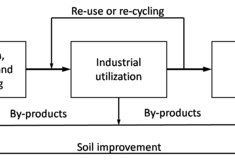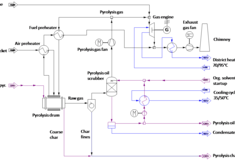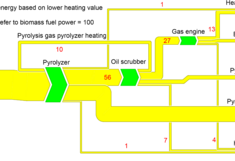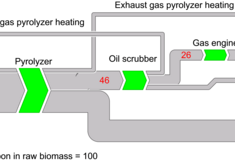If net CO2 sinks are to be implemented as climate change mitigation or climate repair strategy, it is advantageous to base the primary CO2 capture from ambient air on natural photosynthesis, i.e. to eliminate carbon contained in biomass from the natural carbon cycle. The estimated half-live of pyrolysis char in soil has been reported to be at least 100 years but may exceed 1000 years for O:C molar ratios lower than 0.2. Cotton is one of the most important textile fibers in the world, accounting for around 35% of total world fiber use [18]. The global 2014-15 cotton production was around 29 million tons. Due to this high production volume, the amount of cotton plant residue was also high. It is estimated that, there are about 75 million tons (dry mass) of cotton waste generated annually. Traditionally, cotton stalks must be buried or burnt to prevent them from serving as an over-wintering site for insects such as the pink bollworm. Timely soil incorporation of this residue adds nutrients back to the soil, increases soil organic matter content, and improves water infiltration.
It can be seen that about half of the energy provided with the raw biomass stays in the pyrolysis char while about 12% are lost to the environment. The rest, which amounts to about 36% of the fuel power input, is distributed on exported pyrolysis oil, electricity and low temperature heat. Pyrolysis oil could potentially be sent to larger, centralized stations and converted with increased efficiency. About 54% of the primary carbon input are expected to stay with the char while the rest will be released to the atmosphere after conversion of the volatile pyrolysis fractions. If we assume that the cotton stalks make up for about 70% of the total biomass in the cotton crop, the system can provide about 35% of the originally captured CO2 as potentially long-lasting char for disposal on the field. Moreover, the inorganic nutrients contained in the pyrolyser feed are expected to be kept almost completely in the agricultural system.
contact: tobias.proell@boku.ac.at
Pröll, T., Al Afif, R., Schaffer, S., Pfeifer, C., 2017, "Reduced Local Emissions and Long-term Carbon Storage through Pyrolysis of Agricultural Waste and Application of Pyrolysis Char for Soil Improvement", Energy Procedia,114, 6057-6066. Schaffer, S., Pröll, T., Al Afif, R., Pfeifer, C., 2017, "Pyrolysis of cotton stalks and utilization of pyrolysis char for sustainable soil enhancement and carbon storage", in: Electronic Proceedings of Biochar: Production, Characterization and Applications, August 20-25, 2017, Hotel Calissano, Alba, Italy, available online: ECI Digital Archives (http://dc.engconfintl.org/).




